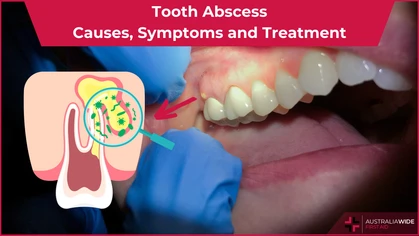Healthy Diet and Regular Exercise

General Health-Related

Regular physical activity is important for staving off a variety of physical and mental conditions, including heart disease, diabetes, depression, and anxiety. Despite this, many Australians are not meeting minimum exercise guidelines on a daily basis.
Exercise and healthy eating are widely known to be beneficial to an individual’s health. These are healthy habits that are promoted to all age groups and are universally known to be beneficial in preventing and treating illnesses. But despite the importance of these healthy behaviours promoted all over the country, very few Australians are meeting the required guidelines. The Australian Institute of Health and Welfare found that over 75% of Australians do not meet physical activity guidelines and 1 in 2 adults are not meeting the guidelines for healthy eating. The effects of not meeting these guidelines can be seen in the prevalence of disease and illness within the general population. According to the Department of Health Australia, cardiovascular disease, diabetes, and mental or behavioural conditions are the most common diseases and conditions to affect Australians. There are many factors that put Australians at risk of these conditions, but unsurprisingly, poor diet and lack of regular exercise are two of the leading causes. Here is how exercise and a healthy diet affect the most chronic conditions facing Australia!Heart Disease
According to the Australian Institute of Health and Welfare, heart disease is the leading cause of death for adults over the age of 45 years old. There are 5 major risk factors for developing cardiovascular disease: high blood pressure, high cholesterol, obesity, smoking, and a sedentary lifestyle. Exercise is a key factor in the prevention and management of many cardiovascular diseases as it combats 4 of these 5 risk factors. Regular physical activity facilitates weight reduction which in turn, reduces blood pressure. It is also able to reduce “bad” cholesterol levels whilst increasing “good” cholesterol levels. When combined with other lifestyle factors, exercise can help facilitate dramatic changes in cardiovascular health. A healthy diet also plays a crucial role in preventing and managing cardiovascular disease. Cholesterol levels in a person are produced within the liver and are formed based on the foods that are eaten. Saturated fats have been found to increase the levels of “bad” cholesterol in the body which increases the risk of heart disease. Furthermore, a diet that is high in salt has been found to cause high blood pressure, also known as hypertension. Saturated fats, salts, and other foods that negatively affect cholesterol and salt levels are typically found within processed foods. By reducing the consumption of processed foods, an individual can greatly reduce their risk of developing cardiovascular disease.Diabetes
Diabetes is a disease where the body cannot maintain healthy blood glucose levels. Glucose is a form of sugar that the body converts into energy using insulin. Individuals with diabetes do not produce enough or any insulin to complete this process which causes blood glucose levels to increase to unhealthy levels. According to Diabetes Australia, there are three types of diabetes:- Type 1: an autoimmune condition where the immune system destroys the cells in the pancreas to produce insulin
- Type 2: a condition where the body becomes resistant to the normal effects of insulin. This can be due to genetic and lifestyle factors
- Gestational: a form of diabetes that occurs during pregnancy
Mental Conditions
The Australian Institute of Health and Welfare defines mental illness as a clinical disorder that significantly alters or impacts a person’s cognitive, emotional, or social ability. At least 1 in 5 Australians are found to be living with a form of mental health condition. Exercise has been found to reduce the risk of developing mental health conditions as well as treating conditions such as anxiety and depression. In fact, research has found that exercise can have the same effect as antidepressants or psychological treatment. Increasing energy levels, improving sleep quality, and increasing levels of brain chemicals such as serotonin, stress hormones, and endorphins are just a few of the benefits that exercise offers to a person. The body and the mind are fuelled by the same energy source: food. Although this is a new area of research, so far, the results are showing that food has a profound influence on your mood and cognitive function. Although sugary, high carbohydrate foods can provide us with a quick energy source, they also lead to a quick crash when the energy is used. A well-rounded diet should aim to include fruits and vegetables for a healthy gut environment, whole grains for good gut bacteria and brain fuel, healthy fats and lean meats which can assist in brain chemical production and can influence our mood.Conclusion
So, the question is which is more beneficial, exercise or eating healthy? They say that you can’t out-exercise a bad diet, however, our analysis of the effects of both on different health conditions shows that both are equally as important in the prevention and management of the most prevalent diseases in Australia. By meeting exercise guidelines and incorporating a healthy, well-balanced diet into your lifestyle, you can greatly reduce your risk of developing life-threatening diseases. Learn more about first aid for heart attack, diabetes, and mental conditions in First Aid course.
Originally published at
https://www.australiawidefirstaid.com.au/resources/healthy-diet-and-regular-exercise
as part of the Australia Wide First Aid Articles Library









